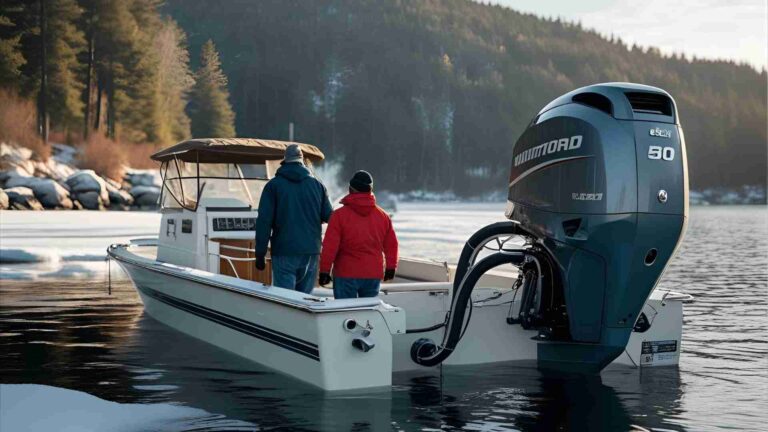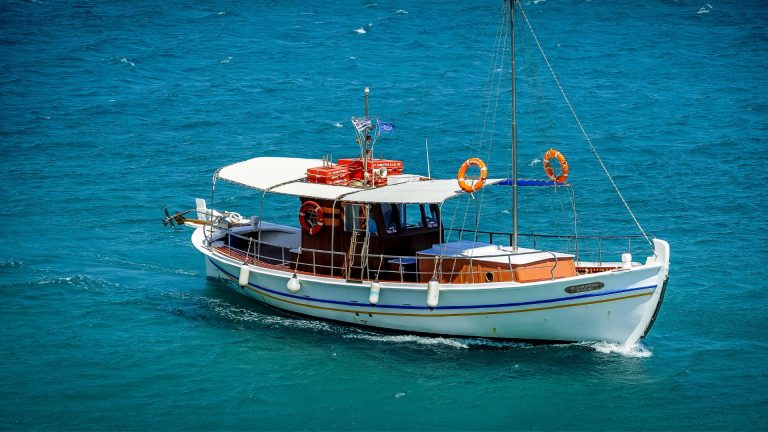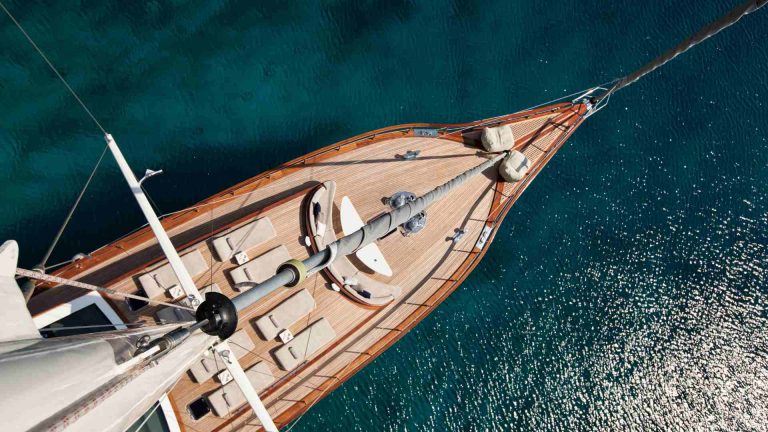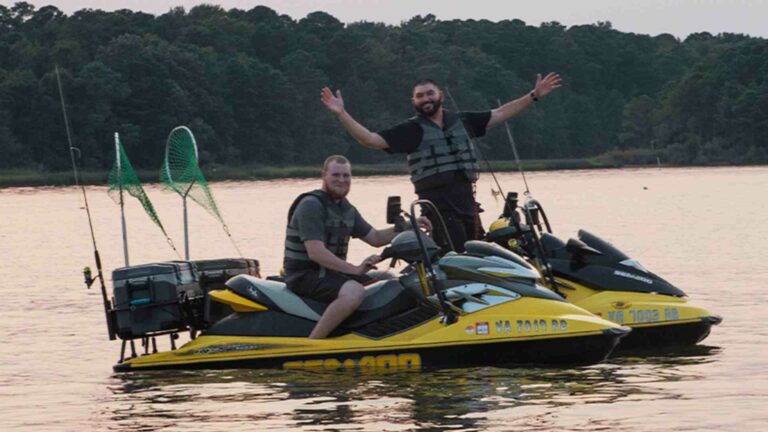Do I Really Need To Winterize Boat?
Winterizing a boat is a critical decision for boat owners, particularly in regions where temperatures drop below freezing. The process involves preparing your vessel for cold weather to prevent damage from freezing water, which can lead to costly repairs. This guide explores why winterizing is essential, the risks of skipping it, and how to do it effectively, with a focus on practical steps, costs, and regional considerations. Whether you’re in a cold northern state or a temperate southern climate, understanding the necessity of winterizing can save you from significant headaches come spring.
The Risks of Not Winterizing: Why It Matters
Water expands by approximately 9% when it freezes, exerting immense pressure—tens of thousands of pounds per square inch—that can crack engine blocks, split hoses, damage fiberglass, or ruin plumbing systems. According to marine insurance claims data, over 75% of freeze-related damages involve engine blocks or exhaust manifolds where water was left in the cooling system during a hard freeze. These repairs are not only expensive but also time-consuming, often requiring a complete engine replacement, which can cost thousands of dollars and delay your boating season.
Surprisingly, states like Texas, often considered warm, lead in freeze-damage claims, with seven times more incidents than colder states like Minnesota. This is because boaters in colder climates are more likely to winterize diligently, while those in temperate regions may underestimate the risk of a sudden cold snap. For example, a severe winter saw snow in Las Vegas and record lows in Los Angeles, catching many southern boaters off guard. Even Florida, known for its mild weather, reports more freeze claims than Minnesota, highlighting the unpredictability of winter weather.
Top 10 States for Freeze-Damage Claims
| Rank | State | Notes |
|---|---|---|
| 1 | Texas | Highest number of claims |
| 2 | New York | Cold winters, diligent winterizing |
| 3 | New Jersey (tie) | Frequent freeze events |
| 3 | Maryland (tie) | Temperate but vulnerable |
| 5 | Virginia | Variable winter temperatures |
| 6 | Mississippi | Unexpected cold snaps |
| 7 | Georgia | Temperate climate, low awareness |
| 8 | North Carolina | Occasional freezes |
| 9 | Washington | Cold, wet winters |
| 10 | South Carolina | Mild but not immune |
This table underscores that freeze damage is not exclusive to cold climates. Only Hawaii consistently reports no freeze claims, making winterizing a near-universal necessity.
What Is Winterizing?
Winterizing involves draining water from a boat’s systems or replacing it with antifreeze to protect against freezing temperatures. The process targets the engine, freshwater systems, plumbing, and other components vulnerable to ice expansion. It typically takes one to eight hours, depending on the boat’s complexity, and can be done by the owner or a professional.
Why Engines Are the Primary Concern
Engines are the most common victims of freeze damage, accounting for the majority of insurance claims. Water left in the cooling system or exhaust manifolds can freeze overnight, leading to cracks that manifest as brown froth or milky oil in the spring. Repairing a cracked engine block can cost $5,000 to $15,000, depending on the engine size and boat type, and may take weeks, eating into the boating season.
How to Winterize Your Boat: A Step-by-Step Guide
Winterizing varies by boat type (inboard, outboard, or sterndrive) and engine (gasoline or diesel). Below is a detailed guide to winterizing key systems, along with tools and products needed.
Tools and Products for Winterizing
| Item | Purpose | Approx. Cost (USD) |
|---|---|---|
| Non-toxic antifreeze | Protects systems from freezing | $10–$20/gallon |
| Fogging oil | Prevents engine corrosion | $8–$15/can |
| Motor oil | Engine maintenance | $20–$50 |
| Fuel stabilizer | Prevents fuel degradation | $10–$20 |
| Oil filter | Engine maintenance | $10–$30 |
| Lower-unit lube | Protects outboard/sterndrive gears | $10–$20 |
| Oil suction pump | Drains engine oil | $30–$100 |
| Lower-unit lube pump | Injects lube into lower unit | $20–$50 |
| Water muffs | Flushes engine with fresh water | $10–$25 |
Winterizing Inboard Engines
Inboard engines, common in larger boats, have two cooling systems: a raw-water side and a closed-loop freshwater side.
- Freshwater Side: Ensure the permanent antifreeze (typically a 50/50 mix of ethylene glycol and water) meets the manufacturer’s specifications for your region’s lowest temperatures. Test the mixture with a hydrometer ($5–$15).
- Raw-Water Side: Run non-toxic propylene glycol antifreeze through the cooling system. Start the engine, attach water muffs, and flush with fresh water until the engine reaches operating temperature. Then, introduce antifreeze via the raw-water intake until it exits the exhaust, ensuring all water is displaced. Use 2–5 gallons, depending on engine size, and run the engine for 5–10 minutes to circulate fully.
- Additional Steps:
- Change the oil and oil filter.
- Spray fogging oil into the cylinders to prevent corrosion.
- Grease all fittings and moving parts.
Winterizing Sterndrives (Inboard/Outboard)
Sterndrives combine inboard engines with outboard drives, requiring specific attention to the outdrive.
- Engine: Follow inboard engine steps for the raw-water and freshwater systems.
- Outdrive: Check the manual for water intake location (thru-hull or outdrive). For thru-hull models, running antifreeze through the engine protects the outdrive. For outdrive-intake models, use muffs to flush with fresh water, then antifreeze. Store the outdrive in the down position to prevent water accumulation.
- Maintenance:
- Inspect the lower unit for barnacles or damage.
- Drain and replace gearcase oil, checking for moisture.
- Grease fittings and apply water-resistant grease to the propeller shaft.
Winterizing Outboard Engines
Outboards are simpler to winterize, especially modern self-draining models.
- Flush the Engine: Attach water muffs or use a garden hose fitting (per the manual) to flush with fresh water. Do not run the engine unless specified, as some newer models flush without starting.
- Fuel System: Top off the fuel tank and add a stabilizer. Run the engine briefly to circulate treated fuel.
- Protect Components:
- Spray fogging oil into the cylinders (consult the manual for injection methods, as some engines require mixing with fuel).
- Change the lower-unit oil and grease all fittings.
- Store the engine in the down position to ensure drainage.
Winterizing Freshwater and Plumbing Systems
Plumbing systems, including freshwater tanks, pumps, and marine heads, are vulnerable to freezing.
- Drain Systems: Empty all water from tanks, heaters, and hoses. Open all faucets and valves to ensure complete drainage.
- Add Antifreeze: Pump non-toxic propylene glycol antifreeze through the system until it exits all faucets and showers. Use 1–3 gallons, depending on system size.
- Marine Head: Pump out the holding tank at an approved facility, flush with fresh water, and add antifreeze to hoses and the tank.
Other Winterizing Tasks
- Bilge: Drain and clean the bilge, then add a small amount of antifreeze to prevent freezing of residual water.
- Interior: Remove electronics, life jackets, and other valuables. Clean the interior, prop cushions upright, and use a dehumidifier to prevent mildew.
- Storage:
- Out of Water: Pressure wash the hull, clean thru-hulls, and open seacocks. Cover with a tarp or shrink-wrap ($200–$500 professionally).
- In Water: Close seacocks, ensure bilge pumps and float switches work, and check batteries. Use a de-icing device in freeze-prone waters.
Chart: Winterizing Process Flow

This chart outlines the decision-making process for winterizing different boat types, emphasizing the common step of using antifreeze and the final storage preparations.
The Dangers of Relying on Heaters
Some boaters in temperate climates opt to use electric heaters or heat lamps in the engine compartment instead of winterizing, but this is risky. Power outages, common during ice storms, can disable heaters, leaving the boat unprotected. For example, a Portland, Oregon, boat owner lost twin gas engines when an ice storm cut power to a heater, and an Alabama boat caught fire when a heater’s extension cord shorted. Heaters also pose fire hazards, especially in enclosed engine compartments with gasoline vapors. Ignition-protected marine bilge heaters ($100–$300) are safer but still rely on electricity, making them a poor substitute for proper winterizing.
DIY vs. Professional Winterizing: Costs and Considerations
DIY Winterizing
- Pros: Cost-effective (materials cost $50–$200), allows hands-on maintenance, and builds familiarity with your boat.
- Cons: Time-consuming, requires technical knowledge, and mistakes can lead to damage.
- Time: 1–8 hours, depending on boat complexity.
- Cost Breakdown:
- Antifreeze: $20–$100 (2–10 gallons).
- Fogging oil, stabilizer, and filters: $30–$80.
- Tools (if not owned): $50–$200.
Professional Winterizing
- Pros: Ensures thorough winterizing, reduces risk of errors, and often includes a warranty (e.g., repairs covered if damage occurs).
- Cons: More expensive, requires scheduling, and depends on the provider’s reliability.
- Cost: $200–$1,000, depending on boat size, location, and services (e.g., oil change, de-winterizing).
- Example Pricing:
- Small outboard: $200–$400.
- Mid-size sterndrive: $400–$700.
- Large inboard: $700–$1,000.
Hiring a Professional: Contract Tips
To avoid disputes, use a written contract specifying:
- All tasks (e.g., engine, plumbing, bilge, head).
- Timeline (before the first freeze).
- No de-winterizing without authorization.
- Payment via credit card for dispute leverage.
Regional Considerations: Should You Winterize?
The decision to winterize depends on your location and usage patterns. Below are guidelines based on climate:
- Cold Climates (e.g., New York, Minnesota): Winterizing is non-negotiable due to consistent sub-freezing temperatures. Combine with annual maintenance (oil changes, spark plug replacement) to streamline costs.
- Temperate Climates (e.g., Texas, Georgia): Even mild winters can bring unexpected freezes, as seen in Texas’s 2021 ice storm. Winterize if temperatures may drop below 30°F for 24+ hours.
- Mild Climates (e.g., Florida, South Carolina): Winterize if the boat will be unused for over a month or if a hard freeze is forecast. For year-round boating, treat fuel and perform mid-season maintenance.
- Tropical Climates (e.g., Hawaii): Winterizing is unnecessary unless the boat is stored for extended periods, in which case fogging and fuel stabilization are sufficient.
When Is Winterizing Optional?
If you boat year-round and live near your vessel, you may skip full winterizing but should:
- Run the engine every 2–3 weeks to circulate fluids.
- Drain water systems after use.
- Use a dehumidifier and check the boat regularly.
However, this approach risks damage during unexpected freezes or power outages, and fuel stabilization remains essential.
De-Winterizing: Preparing for Spring
De-winterizing ensures your boat is ready for the season and verifies that winterizing was effective. Professionals charge $100–$300 for:
- Running the engine to flush antifreeze and replace with raw water.
- Checking electronics, stereos, and ballast systems.
- Reattaching ballast bags and replacing the engine impeller ($20–$50).
DIY de-winterizing involves flushing systems, inspecting for damage, and performing maintenance. Professional de-winterizing often includes a warranty, covering repair costs if winterizing failed.
Common Mistakes and How to Avoid Them
- Incomplete Draining: Residual water can freeze, so run antifreeze until it exits all outlets.
- Using Toxic Antifreeze: Ethylene glycol is poisonous and unsuitable for plumbing systems. Use propylene glycol ($10–$20/gallon).
- Skipping Fuel Stabilization: Untreated fuel degrades, clogging injectors or carburetors. Use a stabilizer ($10–$20).
- Assuming Heaters Are Enough: Power outages or shorts make heaters unreliable.
- Vague Contracts: Specify all tasks in writing when hiring professionals.
Conclusion: Winterize to Protect Your Investment
Winterizing is a small investment compared to the cost of repairing freeze damage, which can range from $5,000 to $15,000 for a cracked engine block. Even in temperate climates, unpredictable cold snaps make winterizing a wise precaution. By following a thorough checklist, using the right antifreeze, and addressing all systems, you can ensure your boat is ready for spring. Whether you DIY or hire a professional, the peace of mind and savings outweigh the effort and cost. Don’t let a single cold night ruin your next boating season—winterize your boat and sail into spring with confidence.
Happy Boating!
Share Do I Really Need To Winterize Boat? with your friends and leave a comment below with your thoughts.
Read Do You Need a License to Sail Around the World? until we meet in the next article.







This article is super helpful for anyone unsure about whether they need to winterize their boat. It breaks down the factors to consider, like your location and boat type, and explains the steps clearly. I feel more confident about how to protect my boat during the colder months now. A must-read for boat owners looking to avoid expensive damage while storing their boats for the season! Highly recommend checking it out for peace of mind!